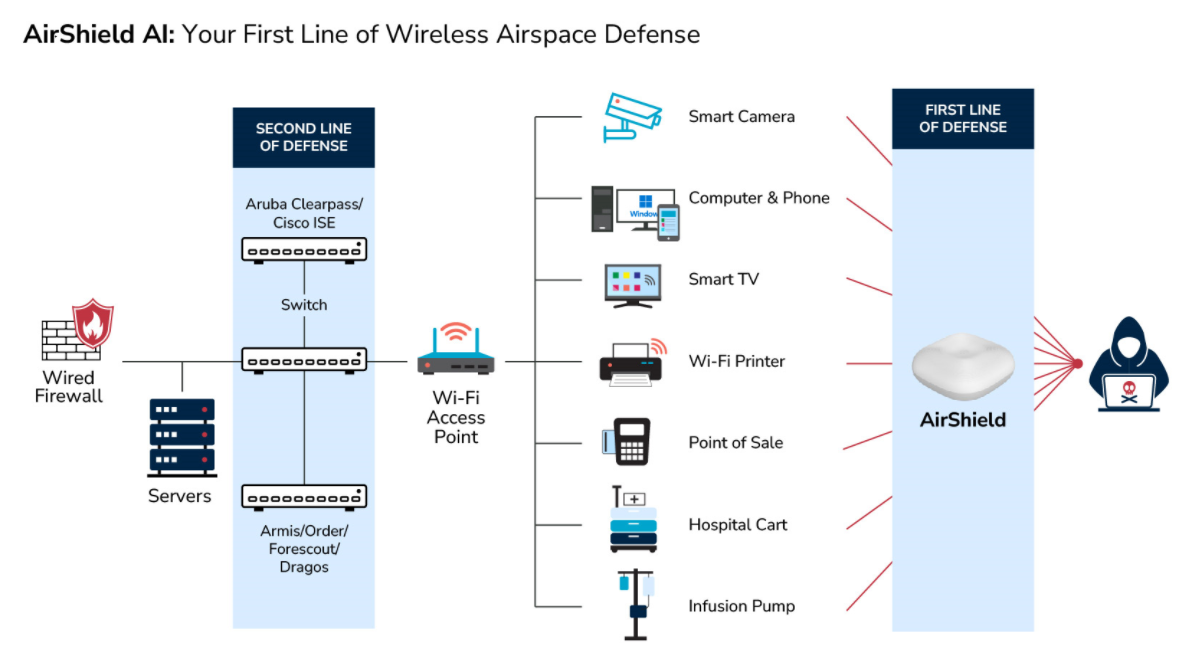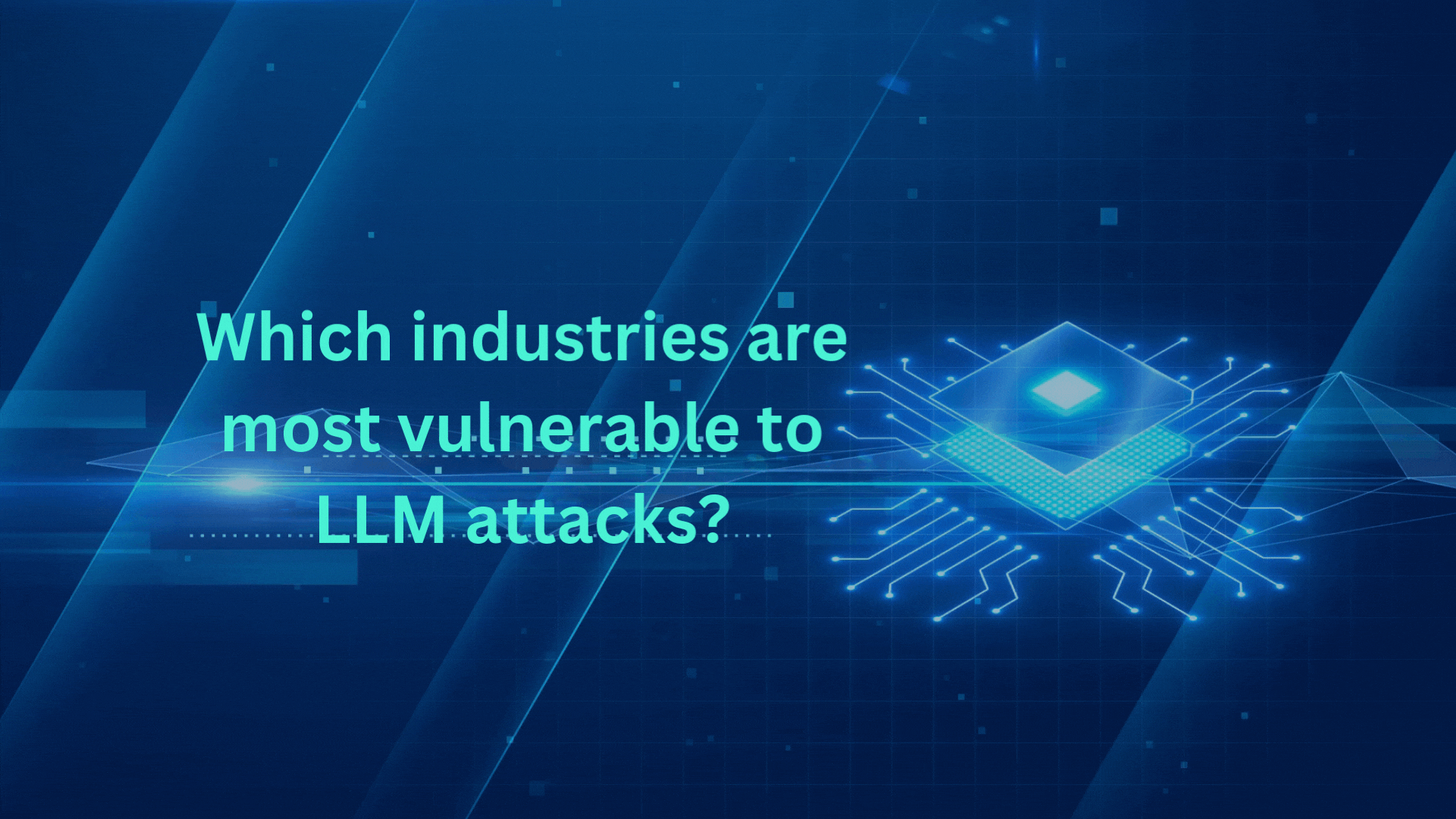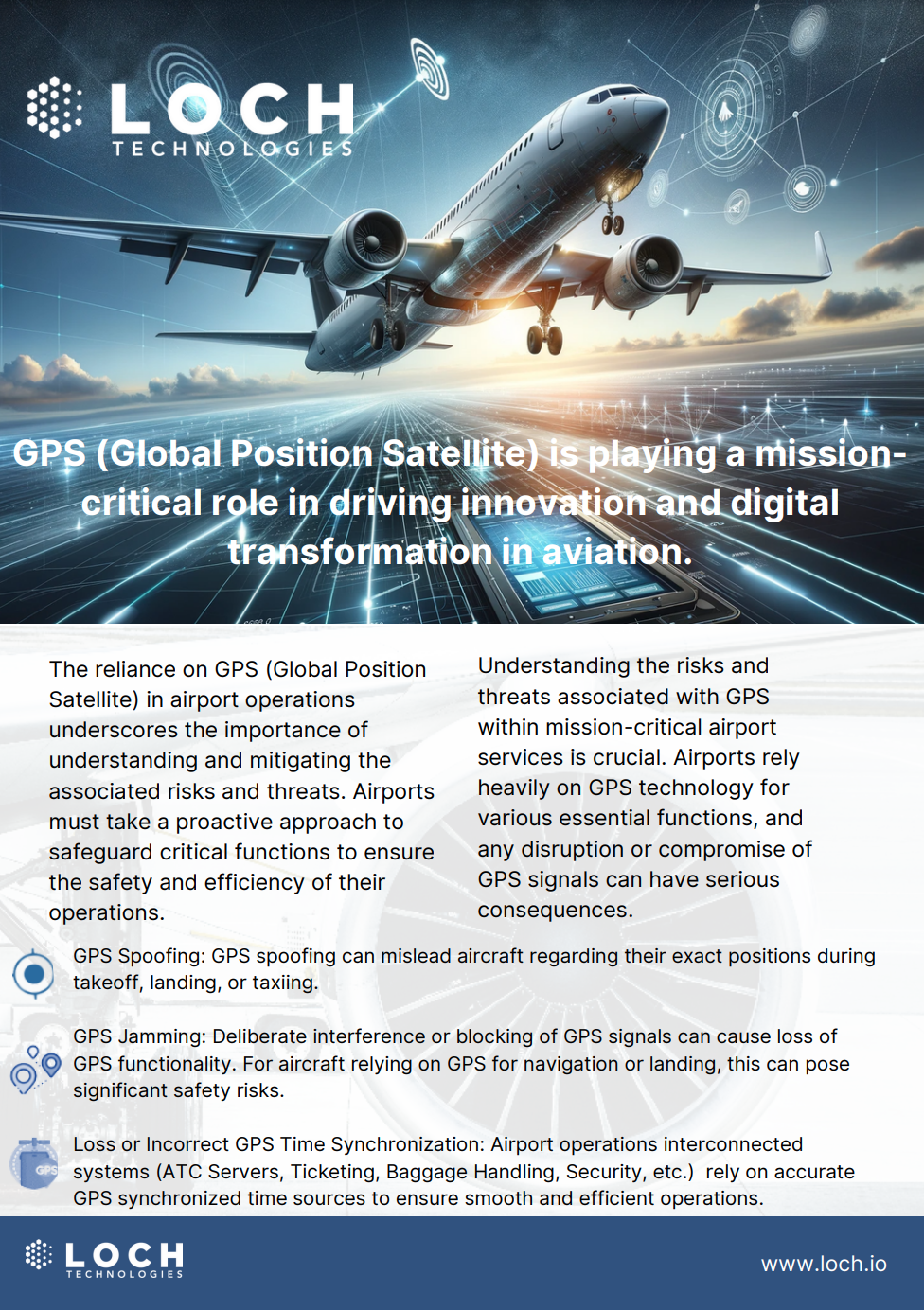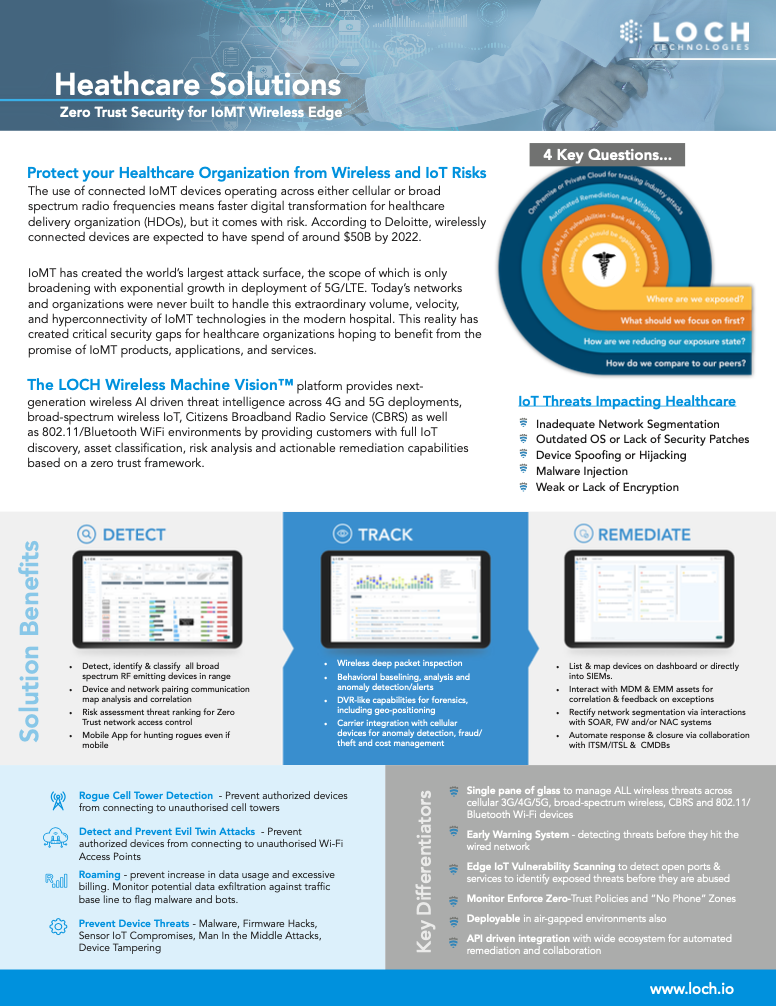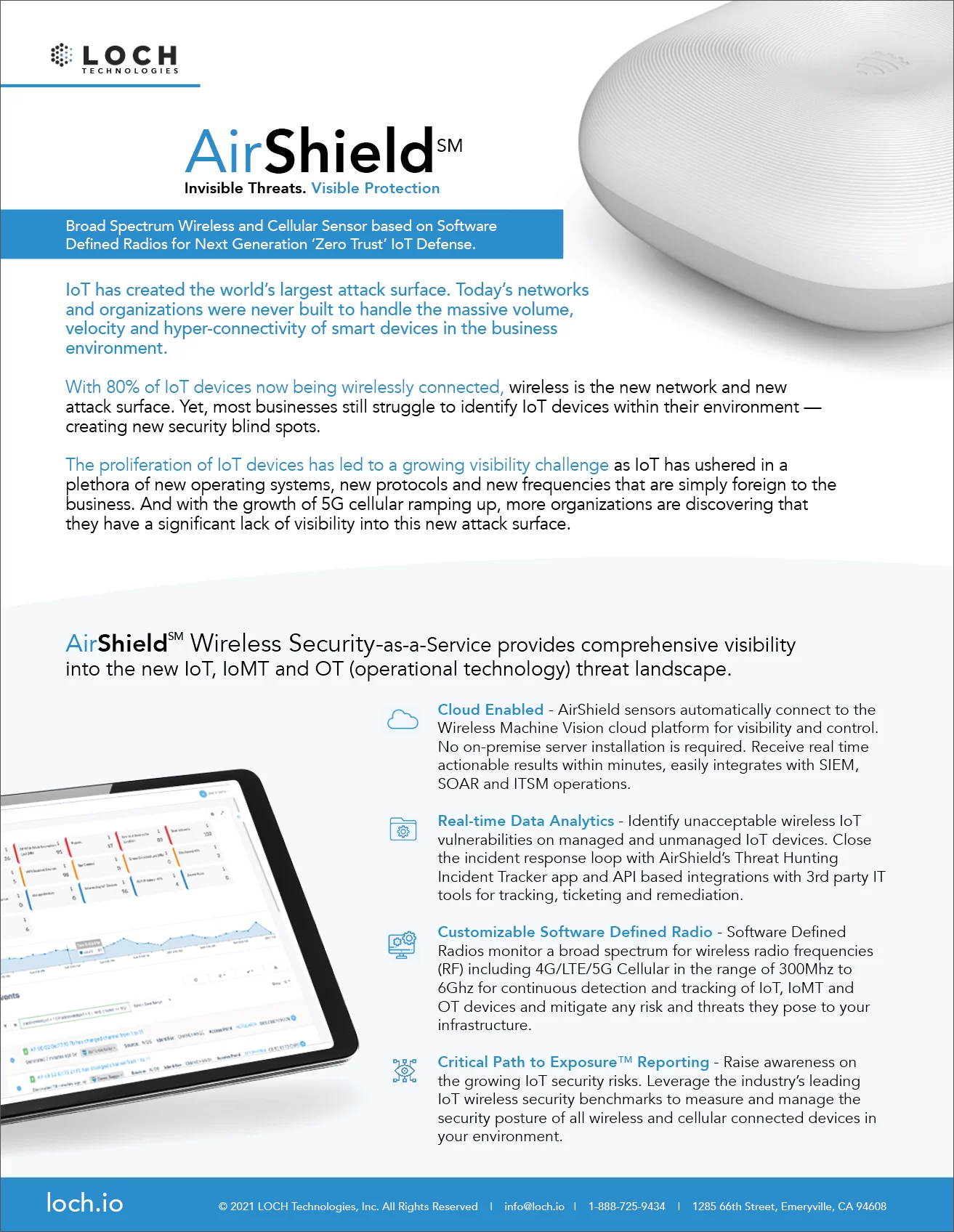
Airports increasingly rely on wireless technologies such as Wi-Fi, cellular, IoT (Internet of Things), CBRS (Citizens Broadband Radio Service), and GPS to enhance operations, improve passenger experience, and support mission-critical services. These technologies facilitate hyperconnectivity, enabling seamless communication, real-time monitoring, and automation. However, the integration of these wireless technologies also introduces various risks and threats that can impact airport operations.
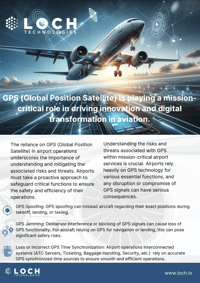
Protect your Airport from Rising GPS Spoofing Attacks

Join Us at the Security & Policing Home Office Event – Farnborough, UK, March 11th - 13th, 2025
Read More
Creating the Next Frontier in Wireless Technology: The Critical Need for Wireless Airspace Defense
Read More
The Silent Threat of Rogue Wi-Fi Networks on Navy Ships – How LOCH's AirShield Could Have Prevented a Security Breach
Read MoreAirShield Wireless Airspace Defense is an intelligent, proactive solution to protect mission-critical wireless networks.
It's a comprehensive security platform that intelligently utilizes state-of-the-art software-defined radios to detect and respond to threats that could compromise wireless signals across critical infrastructure, especially airport environments.
With this defense system, you can rely on the AirShield wireless security platform to constantly monitor and protect wireless networks from malicious or unauthorized activities.
Through patented AI wireless machine vision, the AirShield wireless airspace defense system will protect and secure mission-critical applications like GPS, Cellular/CBRS, broad-spectrum IoT, and Wi-Fi from emerging new threats.
Brace for Impact:
Airports Facing Escalating Wireless Airspace Defense Threats by 2024
Airports expect to face a range of wireless airspace threats in 2024 due to the evolving nature of technology and malicious intent. These threats include:
GPS Spoofing/Jamming
Malicious actors can disrupt navigation by sending false GPS signals or jamming legitimate ones. This could affect airport systems, airline navigation, and ground vehicle management.
Drones
The increasing use of commercial and hobbyist drones can create unintended or malicious incursions. Drones can interfere with flight operations, carry surveillance equipment for reconnaissance, or even deliver contraband.
Cyber Attacks on IoT Devices
The increasing use of IoT devices in airports, such as security cameras, baggage scanners, and intelligent lighting, makes them susceptible to exploitation if not adequately secured.
Unsecured Wi-Fi Networks
Hackers can exploit unprotected Wi-Fi networks to infiltrate airport systems, which could lead to data breaches, disruption of operations, or unauthorized surveillance.
Rogue Access Points (RAPs)
Unauthorized access points can lure unsuspecting passengers or staff into providing sensitive information or inadvertently allow hackers into secure networks.
Radio Frequency (RF) Jamming
Interfering with essential communication systems such as air traffic control and ground communications can create havoc.
Physical Surveillance Technologies
Malicious actors can use wireless surveillance equipment to gain sensitive information, monitor airport operations, or assess security measures.
By implementing a comprehensive wireless airspace defense system, airports can effectively counter threats such as unauthorized drones, GPS spoofing, RF interference, and network breaches.
This system, equipped with advanced radar, radio frequency sensors, and machine learning algorithms, provides continuous surveillance, detection, and response capabilities.
It offers centralized data analytics and real-time threat alerts, ensuring the protection of critical operations, passenger safety, and the minimization of disruptions, thereby instilling a sense of security.
- - Detect, identify and classify all broad spectrum RF emitting devices in range
- - Device and network pairing communication map analysis and correlation
- - Risk assessment threat ranking for Zero Trust network access control
- - Mobile App for hunting rogues even if mobile
- - Wireless deep packet inspection
- - Behavioral baselining, analysis and anomaly detection/alerts
- - DVR-like capabilities for forensics, including geo-positioning
- - Carrier integration with cell. devices for anomaly detection, fraud/theft and cost management
- - List and map devices on dashboard or into SIEMs.
- - Interact with MDM and EMM assets for correlation and feedback on exceptions
- - Rectify network segmentation via interactions with SOAR, FW and/or NAC systems
- - Automate response and closure via collaboration with ITSM/ITSL and CMDBs





